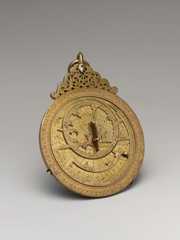Our editors will review what you’ve submitted and determine whether to revise the article.
In any event, preliminary attempts to Westernize Chinese society from within did not deter further foreign penetration; nor did the subsequent revolution (1911) succeed in freeingChina from Western domination. Toward the end of the 19th century, under the impact of the newimperialism, the spread of foreign penetration accelerated. Germany entered a vigorous bid for its sphere of influence; Japan and Russia pushed forward their territorial claims; and U.S. commercial and financial penetration of the Pacific, with navalvessels patrolling Chinese rivers, was growing rapidly. But at the same time this mounting foreign interest alsoinhibited the outright partition of China. Any step by one of the powers toward outright partition or sizable enlargement of its sphere of influence met with strong opposition from other powers. This led eventually to the Open Door Policy, advocated by theUnited States, which limited or restrictedexclusive privileges of any one power vis-à-vis the others. It became generally accepted after the antiforeignBoxer Rebellion (1900) in China. With the foreign armies that had been brought in to suppress the rebellion now stationed in North China, the danger to the continued existence of the Chinese government and the danger of war among the imperialist powers for their share of the country seemed greater than ever. Agreement on theOpen Door Policy helped to retain both acompliant native government andequal opportunity for commerce, finance, andinvestment by the more advanced nations.
Japan’s rise as a colonial power
Japan was the only Asian country to escape colonization from the West. European nations and the United States tried to “open the door,” and to some extent they succeeded; but Japan was able to shake off the kind of subjugation, informal or formal, to which the rest ofAsiasuccumbed. Even more important, it moved onto the same road of industrialization as didEurope and the United States. And instead of being colonized it became one of the colonial powers.
Japan had traditionally sought to avoid foreign intrusion. For many years, only the Dutch and the Chinese were allowed trading depots, each having access to only one port. No other foreigners were permitted to land in Japan, though Russia,France, and England tried, but with little success. The first significant crack in Japan’s trade and travel barriers was forced by the United States in an effort to guarantee and strengthen its shipping interests in the Far East. Japan’s guns and ships were no match for those of Commodore Perry in his two U.S. naval expeditions to Japan (1853, 1854).
The Japanese, well aware of theimplications of foreign penetration through observing what was happening to China, tried to limit Western trade to two ports. In 1858, however, Japan agreed to a full commercial treaty with the United States, followed by similar treaties with theLow Countries, Russia, France, andBritain. The treaty pattern was familiar: more ports were opened; resident foreigners were granted extraterritorial rights, as in China; import and export duties were predetermined, thus removing control that Japan might otherwise exercise over itsforeign trade.
Many attempts have been made to explain why a weak Japan was not taken over as a colony or, at least, did not follow in China’s footsteps. Despite the absence of a commonly accepted theory, two factors were undoubtedly crucial. On the one hand, the Western nations did not pursue their attempts to control Japan as aggressively as they did elsewhere. In Asia the interests of the more aggressively expanding powers had centred onIndia, China, and the immediately surrounding areas. When greater interest developed in a possible breakthrough in Japan in the 1850s and 1860s, the leading powers were occupied with other pressing affairs, such as the 1857Indianmutiny, theTaiping Rebellion, theCrimean War, French intervention in Mexico, and the U.S. Civil War. International jealousy may also have played a role in deterring any one power from trying to gain exclusive control over the country. On the other hand, in Japan itself, the danger of foreign military intervention, a crisis in its traditional feudal society, the rise of commerce, and a disaffected peasantry led to an intense internal power struggle and finally to a revolutionary change in the country’s society and a thoroughgoing modernization program, one that brought Japan the economic and military strength to resist foreign nations.
The opposing forces in Japan’s civil war were lined up between the supporters of the ruling Tokugawa family, which headed a rigid hierarchical feudal society, and the supporters of the emperorMeiji, whose court had been isolated from any significant government role. The civil war culminated in 1868 in the overthrow of the Tokugawa government and the restoration of the rule of the Emperor. TheMeiji Restoration also brought new interest groups to the centre of political power and instigated a radical redirection of Japan’s economic development. The nub of the changeover was the destruction of the traditional feudal social system and the building of a political, social, and economic frameworkconducive to capitalist industrialization. The new state actively participated in the turnabout by various forms of grants and guarantees to enterprising industrialists and by direct investment in basic industries such as railways, shipbuilding, communications, and machinery. The concentration of resources in the industrial sector was matched by social reforms that eliminated feudal restrictions, accelerated masseducation, and encouraged acquisition of skills in the use of Western technology. The ensuing industrialized economy provided the means for Japan to hold its own in modern warfare and to withstand foreign economic competition.
Soon Japan not only followed the Western path of internal industrialization, but it also began an outward aggressionresembling that of the European nations. First came the acquisition and colonization of neighbouring islands:Ryukyu Islands (including Okinawa), theKuril Islands,Bonin Islands, and Hokkaido. Next in Japan’s expansion program was Korea, but the opposition of other powers postponed the transformation of Korea into a Japanese colony. The pursuit of influence in Korea involved Japan in war with China (1894–95), at the end of which China recognized Japan’s interest in Korea and ceded to Japan Taiwan, the Pescadores, and southernManchuria. At this point rival powers interceded to force Japan to forgo taking over the southern Manchuria peninsula. While France, Britain, and Germany were involved in seeking to frustrate Japan’simperial ambitions, the most direct clash was with Russia over Korea and Manchuria. Japan’s defeat ofRussia in the war of 1904–05 procured for Japan the lease of the Liaotung Peninsula, the southern part of the island of Sakhalin, and recognition of its “paramount interest” in Korea. Still, pressure by Britain and the United States kept Japan from fulfillment of its plan to possess Manchuria outright. By the early 20th century, however, Japan had, by means of economic and political penetration, attained a privileged position in that part of China, as well as colonies in Korea and Taiwan and neighbouring islands.











